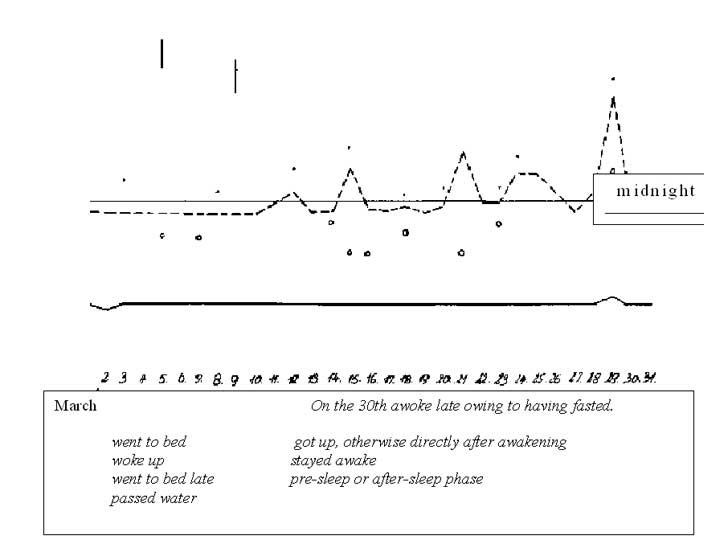
Graphic illustration of sleeping time after adjusting to natural sleep
(as an example), drawn up by Dr. phil. Sembach in March 1934 (taken
from: Hippokrates 4/1937).
Dr. Sembach summarizes his "Experiences with natural sleep"
as follows (see also page 17): "In my case, I could determine the
personal result of the conversion to natural time as an extraordinary
strengthening of my health and improvement of my efficiency. The extreme
improvement as experienced by the young Stöckmann did not occur in my
case. Perhaps this is due to the difference in our ages. I was born
in 1881.
I was able to determine that it is possible to practise natural time,
even over lengthy periods as the insertion of a short period of sleep
in the late afternoon is compatible with the demands of cultural and
social life. I could not discern that the time of 11:20 p.m. was the
limit of 'absolute' natural sleep. For sensitive and weak persons, among
whom I apparently belong, the relative natural time from 7 p.m. to 2
a.m. is much superior to any other sleeping time. For a short period
of sleep, a greater depth of sleep is necessary which, as stressed by
Stöckmann, must be well prepared for by moving the evening meal to between
3 and 4 p.m. and allowing work to ebb away, depending on its difficulty,
between 5 and 6 p.m."